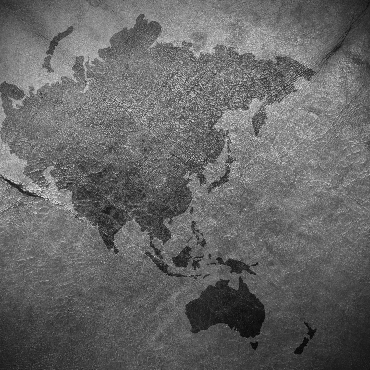NEPAL BANS TIKTOK, TIGHTENING SOCIAL MEDIA REGULATIONS
In mid-November, the Nepalese government banned Chinese social media app TikTok, citing its adverse effects on "social harmony, goodwill and [the] flow of indecent materials," in Nepal. The ban was put in place following the passage of a 19-point directive tightening government regulation on all social media sites. Kathmandu says that "the ban is being introduced after a large number of people complained that TikTok encourages hate speech," as well as complaints that "the absence of companies' representatives in Nepal made it challenging for authorities to address user concerns and remove objectionable content from the platforms."
To hold TikTok and other social media platforms accountable, Kathmandu has requested that they open liaison offices in the country, abide by Nepal's laws, and pay taxes. The ban is sure to stoke a mixed reaction among Nepali citizens, given that more than 2.2 million of its citizens are users of the platform. ByteDance, the Chinese company that owns TikTok, has faced scrutiny from multiple countries, including India and the U.S., as concerns of practices like data harvesting have grown. (Associated Press, November 13, 2023; USA Today, November 15, 2023)
RUSSO-INDIAN ARMS TRADE STILL GOING STRONG
Toward the end of 2023, India signed a contract with Russia to acquire units of its Igla-S, and obtained a license from Moscow to indigenously produce the hand-held anti-aircraft missiles. The Igla-S is a portable air defense system that can be fired by either an individual or a crew. India is the world's largest arms importer, and despite its attempts to diversity the sources of its weaponry, still relies heavily on Russia, which ranks as its number one supplier. Between 2018 and 2022, India imported 45% of its arms from Russia. The quality and reliability of Russian arms, however, has been under scrutiny of late as a result of Russian military losses and poor performance in Ukraine. Nevertheless, defense ties with India remain strong. Russia's state arms exporter, ROSOBORONEXPORT, has previously provided New Delhi with Su-30MKI fighter jets, tanks, armored vehicles, and shells, as well as recently launching joint production of AK-203 Kalashnikov assault rifles. (Reuters, November 14, 2023)
INDIA'S GROWING NAVAL FLEET
In late November, India announced that it would be adding a $4.8 billion aircraft carrier to its growing naval fleet. India's second indigenous-produced carrier plans to be able to hold at least 28 French Rafale jets and helicopters. The move comes as a counter to increased Chinese naval presence in the Indian Ocean. In recent years, the Indian Ocean region has become heavily militarized with warships from the U.S., France, Japan, and China regularly patrolling the area, pushing South Asian nations to increase their own naval fleets. New Delhi plans to have 175 warships by 2035 to rival Beijing's largest navy in the world which houses 370 Chinese ships and submarines. (South China Morning Post, November 29, 2023)
KABUL'S NEW CANAL
The Taliban-led government in Afghanistan is having difficulty with their Qosh Tepa irrigation canal project, which is causing concern among neighboring countries, particularly Uzbekistan and Turkmenistan. The canal, designed to convert 550,000 hectares of desert into arable land, has raised worries due to Afghanistan's plan to divert 20% of the water from the Amu Darya River, access to which is shared by all three countries. This diversion could negatively impact the agricultural and textile-based economies of the Central Asian states. Yet despite domestic economic problems and a massive price tag of $684 million, Kabul has remained steadfast in its commitment to completing the canal, emphasizing its importance in addressing economic and employment challenges. Moreover, the Taliban venture enjoys significant popular support among ordinary Afghans. (Nikkei, December 9, 2023)
THE QUAD'S NEW INVESTMENT MODEL IN SRI LANKA
The development of the Colombo West International Terminal project in Sri Lanka, backed by more than $500 million in funding from the U.S. government and with a 51% ownership stake by India's Adani Group, presents a potential countermeasure to China's growing influence in the Indo-Pacific. As part of the Quadrilateral Security Dialogue (more commonly known as The Quad), the U.S. and India, along with Australia and Japan, aim to provide an alternative to China's Belt and Road Initiative (BRI) for developing nations. China's BRI has led to a variety of large infrastructure projects in Sri Lanka funded by Chinese loans, including highways, an airport and the Hambantota Port. China's investments in Sri Lanka led to the nation defaulting on its sovereign debt in 2022.
The new Colombo West public-private partnership model underscores The Quad's determination to prevent smaller nations from becoming overly reliant on China. The U.S. International Development Finance Corporation will provide a significant portion of the financing, reflecting the larger rivalry between the United States and China. If successful, the partnership model is expected to be replicated in other regions, further enhancing the ability of like-minded nations to navigate China's economic and strategic initiatives. (South China Morning Post, December 4, 2023)
Want these sent to your inbox?
Subscribe

